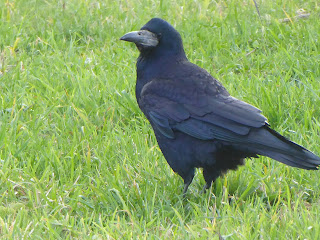Wildlife friendly land management - 6 simple changes you can easily impliment no matter where you keep your horse.
Recently we moved our horses to a new rented field. I have always had a keen interest in land management, wildlife and ecology, but always felt like I was fighting a losing battle on our old land where not only did we have boggy clay soil, even in summer, but our landlords were of the belief that we wanted a mono-culture, and if trees grew then they needed cutting down. We were very limited in what we could do, but even there we made a few significant changes that had huge benefit to the local ecosystem. Now we are on a far nicer plot, where we are allowed to plant trees, sow seeds and encourage diverse wildlife, and my enthusiasm for safeguarding nature has returned. Here I want to outline a few things you can do at your livery or field to benefit wildlife, regardless of if you're on a bog like we were with landlords who wanted a neatly mowed lawn not a meadow, or if you're free to do what you want. This is very much a bullet point style entry - please contact me if you have any questions or want to discuss ideas 😊
1) Plant wildflowers
The more species of flower that you have, the more wildlife will come to your paddock. Attracting pollinators will help native flower species thrive. You can sow a dedicated wildflower meadow, a metre long strip or just pop some in a pant pot if needs be, anything is better than nothing, but the more you plant, the healthier the ecosystem will become. When choosing flowers always aim to stick with native plants, take a walk around your local countryside and see what grows naturally. You can either harvest the seeds yourself from locally plants, or you can buy them online or from plant nurseries depending on how many seeds you are after. The best time to plant wild flower seeds is early spring. If you're just starting out then ensure you buy both annual plants and perennial plants in a mix, that way your annuals will provide life this year, and hopefully reseed themselves for following years, while the perennials will take longer to establish. You can choose to plant flower beds, pots or after ensuring that the seeds you choose are safe for a horse to consume, you can even sow them over your paddocks, turning them into species rich meadows.
Some of the local wildflowers to me, that are safe for horses, include:
Rose bay willow herb
Dandelion
Thistle
Common vetch
Pineapple weed
Yarrow
Birdsfoot trefoil
Knapweed
Ideally, for healthy native grassland, you want 20-30 different species of plant (this can include native grasses) per square metre. But, even if you only add a couple of species at a time then that's great.
2) Create a pond
Ponds attract a variety of wildlife and are the centre of a healthy and diverse ecosystem. You don't have to go crazy but by building even just a small pond in a fenced off corner of your paddock you can make a big difference to many species, especially our pollinators who are a vital part of our environment. Check out the Wildlife Trust's website for more information on how to get started!
https://www.wildlifetrusts.org/actions/how-build-pond
Keep your horse at livery? No problem! Check out 'planter' or container ponds for a small scale equivalent.
3) Plant trees and hedging
Trees and hedging create protection for wildlife from birds, to small mammals to insects. Depending on what you plant they can also provide a vital food source, such as berries on a hawthorn, or nectar from flowers. Not only are these great for wildlife, but they also provide shelter for your horses, offering shade in the summer and protection from rain once they have grown and become more established. While you wait for your hedgerows or trees to grow, dead hedging can be a great way to encourage wildlife and build sheltered areas. When choosing your trees ensure you check how large each species grows, and that they are safe for horses. Ash, Beech, Lime are all huge trees that are horse safe, Birch, Hawthorn are smaller. Hawthorn and hornbeam make great hedging, hornbeam keeping it's leaves year round to give extra protection.
4) Add bug hotels
Creating spaces for insects and beetles to call 'home' helps keep their populations up. Creatures such as some species of Bee will need spaces that bug hotels provide to lay their larva or to nest over winter. Other creatures such as woodlice or ants will also benefit. Our decomposers often get overlooked but their presence is vital. Check out this link on creating your own DIY bug hotel and helping our tiny, but highly valuable wildlife thrive:
5) Create log piles
As with hedging and dead hedges log piles create coverage for small mammals, birds and insects. This is such a simple addition you can make to your paddock or yard, It can be a little or large as you like - and you can start small and add to it as you go. I have two log piles, on at home and one in our field. Each fairly small but each full of life. Both piles are built up from free wood that people were giving away. The only wood I would be cautious of using is Yew, due to it's toxicity.
6) Leave a small muck heap / compost pile for beetles
Dung beetles are amazing creatures, by leaving some of your muck heap rather than getting it all removed it will allow them a place to stay. If you do nothing else today then please just watch this video by Equiculture about dung beetles and horses!
https://www.equiculture.net/blog/horse-manure-and-dung-beetles
Follow the links below the video for more info on these amazing creatures!
🌹🐸🐞🐛🐜 Thank you for reading 🐌🐭🐝🌲🌼






